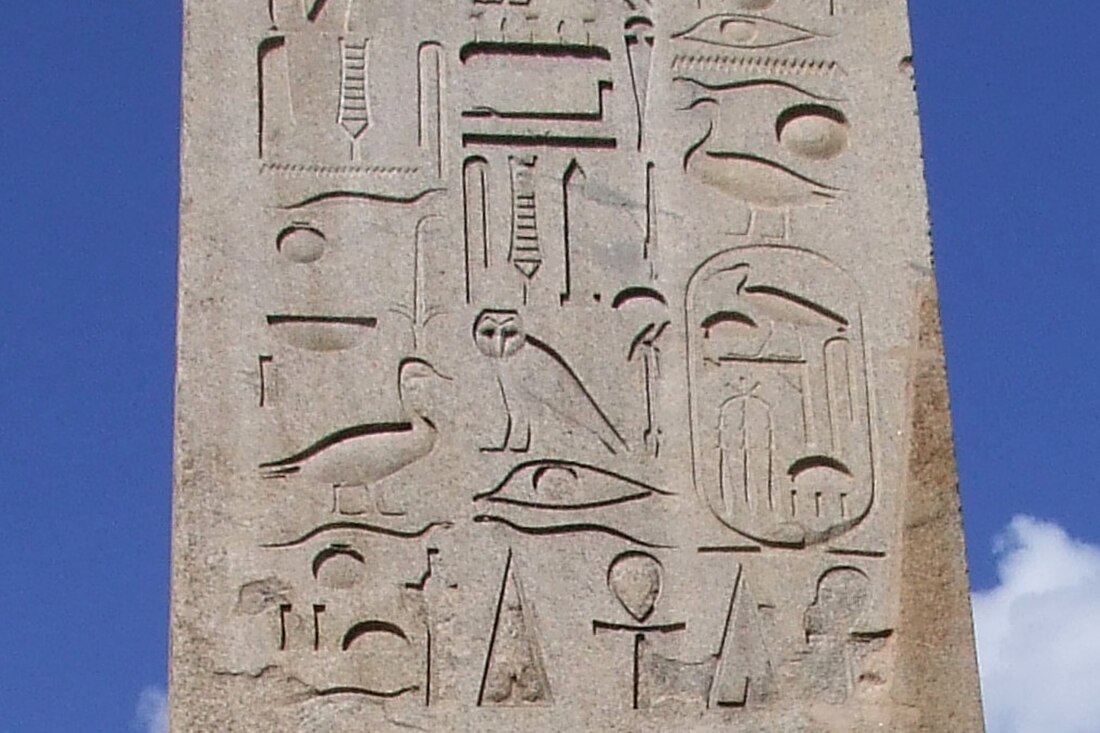Top Qs
Timeline
Chat
Perspective
Obelisk (hieroglyph)
Egyptian hieroglyph From Wikipedia, the free encyclopedia
Remove ads
The ancient Egyptian Obelisk hieroglyph, Gardiner sign listed no. O25 is a portrayal of the obelisk. The hieroglyph is commonly used on erected Egyptian obelisks, as there is often a discussion of the event of its erection: a historical event, as well as an accomplishment of the pharaoh, and the Egyptian Kingdom.
This article relies largely or entirely on a single source. (January 2024) |

Remove ads
Usage
The obelisk hieroglyph in the Egyptian language is t(kh)n, and is the identical word with the same spelling (different determinatives), for 'to beat a drum', musician, etc. There are other meanings for 'tekhen', as well. The obelisk is a determinative in the Egyptian language, and the word t(kh)n has multiple spellings, since obelisk construction was done over various time periods. Some spellings are:[1]
The second spelling uses the shortened variety of the block-of-stone (hieroglyph),
as the 2nd determinative.
Remove ads
Gallery
See also
Wikimedia Commons has media related to Obelisk (hieroglyph).
References
Wikiwand - on
Seamless Wikipedia browsing. On steroids.
Remove ads

